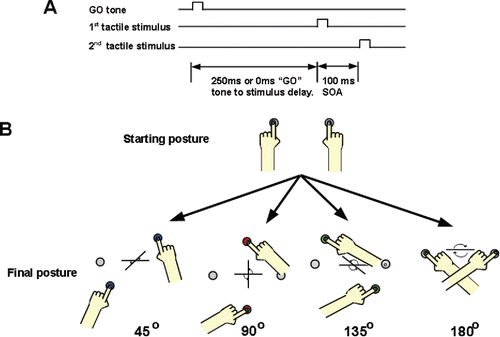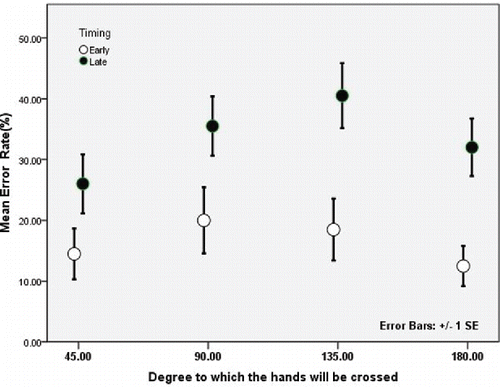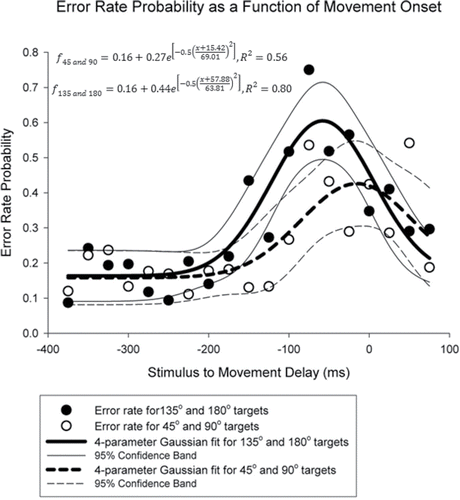Figures & data
FIGURE 1. (A) Temporal order judgment (TOJ) task. We instructed participants to move as soon as they were given an auditory cue to one of four different sets of targets. An auditory cue to move was given 250 ms prior to, or coincident with, the first stimulus prior to the first hand stimulated. Tactile stimuli were applied 100 ms apart. Participants were instructed to move their hands to the targets as soon as they heard the tone, and then indicate verbally which hand was stimulated first. (B) Schema of arm configurations while performing TOJ. Participants were instructed to move to a specific target that would place their arms 45°, 90°, 135°, and 180° rotated from the starting position. Target location was held constant within each block.

FIGURE 2. Temporal order judgment (TOJ) error rates expressed as a function of cue time and the degree to which the hands were crossed. Error rates for TOJs in the early condition (−250 ms) are shown in white circles and those in the late condition (0 ms) are shown in black circles.

FIGURE 3. Temporal order judgment (TOJ) error rate binned across different stimulation-reaction time onset asynchronies. Filled circles indicate TOJ error rates when participants moved to the more crossed configurations (135° and 180°) and open circles indicate TOJ error rates when participants moved to the less crossed configurations (45° and 90°). Lines represent a four-parameter Gaussian fit for these two groups. Negative values indicate that the first stimulus was applied to the hand prior to movement onset; positive values indicate that the first stimulus was applied to the hand after movement onset.

TABLE 1. Kinematic variables
